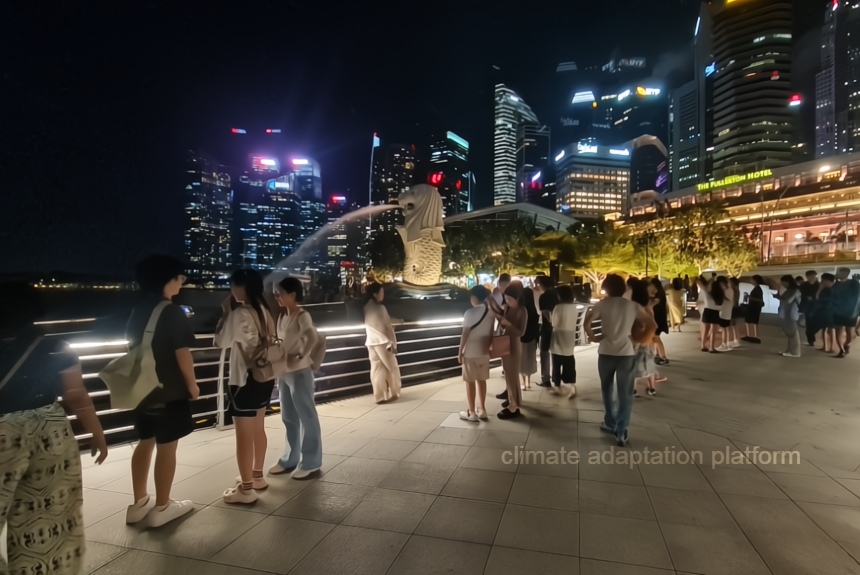This article is related to our previous post on the Asia-Pacific Resilience Prospectus from the 100 Resilient Cities project by the Rockefeller Foundation. The project aims to support cities in the Asia Pacific region in achieving urban resilience.
Urban resilience refers to how cities address challenges such as climate change, rapid population growth, urban development, industrial and residential pollution, water resource management, wastewater management, and other environmental concerns, while also prioritising environmental care and ecosystem preservation.
The report “Resilient Cities, Resilient Lives” emphasises the importance of cities in today’s century as political and innovation centres that attract the rich and the poor alike. Urban centres are also where most people live today, hosting around 55 per cent of the world’s population and generating 80 per cent of the global GDP.
Why Urban Resilience
The “Resilient Cities, Resilient Lives” report says that the world is more densely populated and interconnected than ever. Cities must develop resilience against problems such as extreme weather, the refugee crisis, disease pandemics, and cyberattacks, among many others.
It states that business-as-usual models, such as reactive planning, will no longer be sufficient for cities to thrive and even survive in the face of these shocks and stresses.
Urban resilience is rooted in three main issues of today: climate change, urbanisation, and globalisation. “Urban resilience is the capacity of individuals, communities, institutions, businesses, and systems within a city to survive, adapt and grow” in the face of shocks and stresses (Resilient Cities, Resilient Lives, 2019).
100 Resilient Cities
On its centennial anniversary, the Rockefeller Foundation launched the 100 Resilient Cities, a non-profit organisation that aims to help cities around the world become more resilient to the challenges of the 21st century, such as more extreme climatic shocks like intense heatwaves, rainfalls, and flooding due to climate change, aging infrastructure, and inadequate public transformation.
100RC works on six continents, involving 47 member countries with a total population of nearly 220 million.
100RC Program
Its long-term goal is to change how cities worldwide plan and act, and encourage them to think proactively and collaboratively, particularly about their interconnected problems. This will help them adapt better and reduce the vulnerability of their residents.
The report states that cities tend to compartmentalise efforts, separating them into silos, such as disaster and response recovery, sustainability, livelihoods and well-being, land use planning, and infrastructure.
It may be efficient to structure it this way, but it might not be the most effective approach, considering the interconnected nature of the problems. Planning for resilience requires an integrated, inclusive, risk-aware, and forward-looking approach, a goal that 100RC will help cities achieve.
One hundred cities were selected through a series of competitive challenges, which attracted over 1,000 applicants from more than 150 countries. The chosen towns should have complex and siloed systems, which result in narrow-minded solutions to immense challenges. Second, existing services or ideas that could help solve the city’s problems often fail to reach them or are not at a scale that is efficient for their needs.
The 100 cities selected were offered the following:
- Finances for establishing a new position,
- The role of a Chief Resilience Officer in their city government is to lead the city’s resilience efforts,
- technical support to develop the city’s resilience strategy,
- access to the 100RC partners, which is composed of private and public non-profit organisations that offer solutions,
- services to support the city’s resilience strategies and implementation, and
- a global network of member cities for mutual knowledge exchange and best practices.
The report contains two sections. The first details what the 100RC has learned about building urban resilience within cities, as illustrated by 23 examples from member cities.
The second section explores the variety of actions that member cities are taking to build resilience in specific sectors, including climate change resilience, data and technology resilience, and earthquake resilience.
You can access the report below to see what cities, such as Los Angeles, Kyoto, Mandalay, Puerto Rico, Singapore, Cape Town, El Paso, and Mexico City, among others, are doing to build resilience.
Sources:
Resilient Cities, Resilient Lives. Learning from the 100RC Network. (2019, July). Retrieved from https://resilientcitiesnetwork.org/downloadable_resources/UR/Resilient-Cities-Resilient-Lives-Learning-from-the-100RC-Network.pdf



Leave a Reply